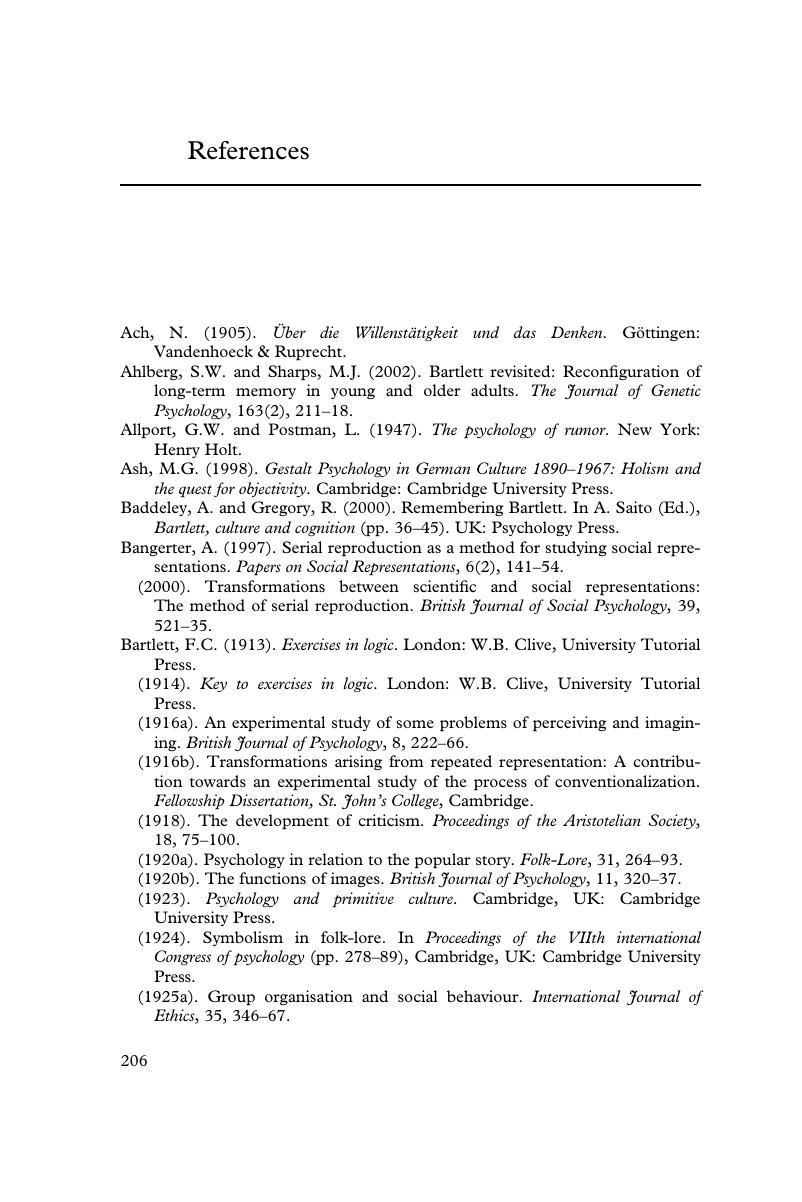Book contents
- The Constructive Mind
- The Constructive Mind
- Copyright page
- Contents
- Figures
- Foreword
- Acknowledgments
- Introduction
- 1 Life and Work of a Cambridge Psychologist
- 2 Experiments in Psychology
- 3 Cultural Diffusion and Reconstruction
- 4 Concept of Schema in Reconstruction
- 5 Social Psychology of Remembering
- 6 Thinking about Thinking
- Conclusion: From Past to Future
- References
- Index
- References
References
Published online by Cambridge University Press: 25 March 2017
- The Constructive Mind
- The Constructive Mind
- Copyright page
- Contents
- Figures
- Foreword
- Acknowledgments
- Introduction
- 1 Life and Work of a Cambridge Psychologist
- 2 Experiments in Psychology
- 3 Cultural Diffusion and Reconstruction
- 4 Concept of Schema in Reconstruction
- 5 Social Psychology of Remembering
- 6 Thinking about Thinking
- Conclusion: From Past to Future
- References
- Index
- References
Summary

Information
- Type
- Chapter
- Information
- The Constructive MindBartlett's Psychology in Reconstruction, pp. 206 - 222Publisher: Cambridge University PressPrint publication year: 2017
